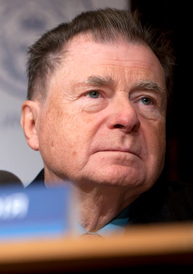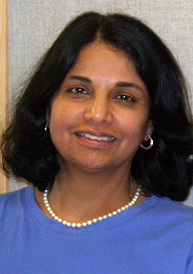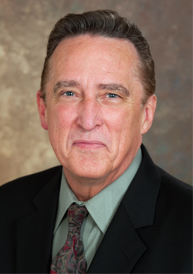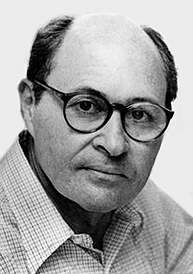 Richard F. Heck
Richard F. Heck
Richard F. Heck, the Willis F. Harrington Professor Emeritus in the Department of Chemistry and Biochemistry at the University of Delaware, received the Nobel Prize in Chemistry on Dec. 10, 2010, in Stockholm.
Heck was honored alongside fellow researchers Akira Suzuki of Hokkaido University in Sapporo, Japan, and Ei-Ichi Negishi of Purdue University, “for palladium-catalyzed cross couplings in organic synthesis.” They shared a $1.5 million award.
According to the Nobel statement, the scientists were honored for discovering “more efficient ways of linking carbon atoms together to build the complex molecules that are improving our everyday lives.”
Palladium-catalyzed cross coupling is used in research worldwide, as well as in the commercial production of pharmaceuticals and molecules used in the electronics industry.
In the 1960s, Heck discovered that arylmercury compounds undergo coupling reactions with alkenes when treated with either stoichiometric or catalytic palladium reagents. In the early 1970s, Heck (independently with Mizoroki) reported that these reactions could also be carried out using less toxic aryl halides in place of the mercury reagents, giving rise to the modern form of the reaction. This transformation has become known as the Heck Reaction. One of the most widely practiced transformations for carbon-carbon bond formation in organic synthesis, the Heck Reaction has had broad impact and is used in preparing countless complex organic molecules, including many pharmaceutical agents. A modification of the Heck Reaction, known as the Sonogashira Coupling, plays a key role in preparing the fluorescent dyes used in DNA sequencing.
Heck’s contributions have been recognized through a number of prestigious awards. In 2004, the University of Delaware Department of Chemistry and Biochemistry established the Heck Lectureship, an annual award given in recognition of significant achievement in the field of organometallic chemistry. In 2005, he was awarded the Wallace H. Carothers Award, bestowed by the Delaware section of the American Chemical Society for creative applications of chemistry that have had substantial commercial impact. In 2006, he received the Herbert C. Brown Award for Creative Research in Synthetic Methods from the American Chemical Society.
Heck was born in Springfield, Mass., on Aug. 15, 1931. He completed his bachelor of science degree (1952) and his doctorate (1954) at the University of California Los Angeles (UCLA). After postdoctoral work, he took a position with Hercules in Wilmington, Del., in 1957, and joined the faculty of the University of Delaware in 1971, where he remained until his retirement in 1989.

Neeloo Bhatti-McAndrew

John M. Byrne

Frederick (Fritz) Nelson
The Intergovernmental Panel on Climate Change (IPCC), and its thousands of contributing members, shared the 2007 Nobel Peace Prize with Albert (Al) Gore, Jr., "for their efforts to build up and disseminate greater knowledge about man-made climate change, and to lay the foundations for the measures that are needed to counteract such change."
IPCC members at the University of Delaware include Profs. John Byrne, Frederick (Fritz) Nelson and Neeloo Bhatti-McAndrew. Bhatti-McAndrew contributed to the IPCC while working as an environmental scientist at Argonne National Laboratory; she joined UD in December 2007, when the prize was officially awarded.
Neeloo Bhatti-McAndrew is the assistant director of the University of Delaware Energy Institute. She received her B.S. in biochemistry from McGill University, and M.E.S., M.S. and Ph.D. degrees in environmental science from Yale. She completed a postdoctoral fellowship at Argonne National Laboratory before joining the staff there as an environmental scientist. She has extensive experience in issues relating to climate change, air quality, energy science and environmental impact analysis. She served as technical coordinator for the U.S. Country Studies Program, which was part of the U.S. commitment to the 1992 U.N. Framework Convention on Climate Change that was signed at the 1992 Rio Earth Summit Conference. She also participated in a number of high-level international missions to Eastern Europe, China and Asia to provide technical assistance in the areas of climate change, air quality and human health impacts. Her research includes a pioneering work that assessed the vulnerability of the Asian region to the potential threat of acid rain. She also has worked as an environmental effects specialist for the World Bank and served as an environmental adviser for the Village of Homer Glen in Illinois. She has written numerous scientific and journal articles and book chapters.
John Byrne is the Distinguished Professor of Energy and Climate Policy and director of UD's Center for Environmental and Energy Policy (CEEP). He co-chairs the Sustainable Energy Utility (SEU) Oversight Board, created by the Delaware General Assembly, and is the architect of this innovative concept for promoting energy efficiency, conservation and distributed renewable energy generation. Byrne also is an architect of the University of Delaware's Climate Action Plan. He created the first graduate degrees in the United States in the combined area of energy and environmental policy and launched the first undergraduate major in the field. Byrne is co-founder and co-executive director of the Joint Institute for a Sustainable Energy and Environmental Future, an innovative research and policy advocacy organization headquartered in South Korea with the mission of promoting sustainable policy options in East Asia. Byrne has held advisory appointments with China’s State Environmental Protection Agency, the Chinese Academy of Sciences, The Energy and Resources Institute (India) and the Korea Energy Economics Institute. He has published 17 books and over 150 research articles, and is the editor of Energy and Environmental Policy, an annual book series published by Transaction Books, and co-editor in chief of Energy and Environment, a new WIRE reference work series by Wiley & Sons.
Frederick (Fritz) Nelson is a professor of geography at the University of Delaware. He is a specialist in permafrost and periglacial geomorphology (cold-climate, nonglacial landforms and processes), geography of the polar regions, and the history of geography and polar exploration. He has conducted field research in Arctic and subarctic Alaska, northwestern Canada, Siberia and the Upper Peninsula of Michigan. An authority on permafrost, Nelson has been a driving force behind the development of the Circumpolar Active Layer Monitoring (CALM) network, established in the early 1990s and now consisting of nearly 200 sites in 15 countries. The network is producing a long-term record of permafrost behavior that is used to document the response of permafrost to climatic "drivers" and to evaluate the performance of climate models. Nelson has received funding continuously for administration of the international CALM network since the mid-1990s primarily from the U.S. National Science Foundation's Office of Polar Programs. Nelson is a member of the board of governors of the Arctic Institute of North America (AINA). The author of numerous scientific and popular articles, Nelson coordinated the University of Delaware's celebration of the International Polar Year in 2007–2009, encompassing public lectures, photographic exhibitions and films.
 Daniel Nathans
Daniel Nathans
Daniel Nathans, who graduated from the University of Delaware in 1950, summa cum laude with distinction in chemistry, won the Nobel Prize in Physiology or Medicine in 1978. The prize, which he received alongside Werner Arber and Hamilton Smith, was "for the discovery of restriction enzymes and their application to problems of molecular genetics."
Because his research laid the groundwork for the mapping of the human genome, Nathans is known as "the father of modern biotechnology."
As recorded in John Munroe's The University of Delaware: A History, when Nathans returned to Newark in 1979 to receive an honorary degree at commencement, he singled out six of his former professors to praise, three for their inspiration in his scientific studies -- Arnold Clark (biology), Quaesita Drake (chemistry) and Elizabeth Dyer (chemistry) -- and three for broadening his interests in other fields -- Anna J. DeArmond (English), Felix Oppenheim (political science) and Bernard Phillips (philosophy).
Nathans was inducted into the University of Delaware's Alumni Wall of Fame in 1985. He also returned to campus in 1993 and delivered remarks at the dedication of UD's Lammot du Pont Laboratory, a state-of-the-art facility for chemistry and biochemistry research.
Nathans was born October 28,1928, in Wilmington, Del. He went on to study medicine at Washington University in St. Louis, completing his residency at Presbyterian Hospital in New York, and then undertook further research in biochemistry at Rockefeller University. Moving to Johns Hopkins University, Nathans taught in the department of microbiology for 37 years, served as department chairman and then as interim president in 1995. An inspiring mentor to his numerous graduate students, as well as a gifted researcher, Dr. Nathans also took to the task of presidential fundraiser. According to an article in the Baltimore Sun, during the year Dr. Nathans served as president, the “university and hospital received a record $125.9 million from private donors.”
In addition to the Nobel Prize, Nathans also received the highest award in science in the United States--the National Medal of Science. He died November 16, 1999, in Baltimore, Md., at the age of 71. Johns Hopkins University School of Medicine named the McKusick-Nathans Institute of Genetic Medicine in his honor posthumously along with Victor McKusick. In 2005, the School of Medicine named one of its four colleges after Nathans.

